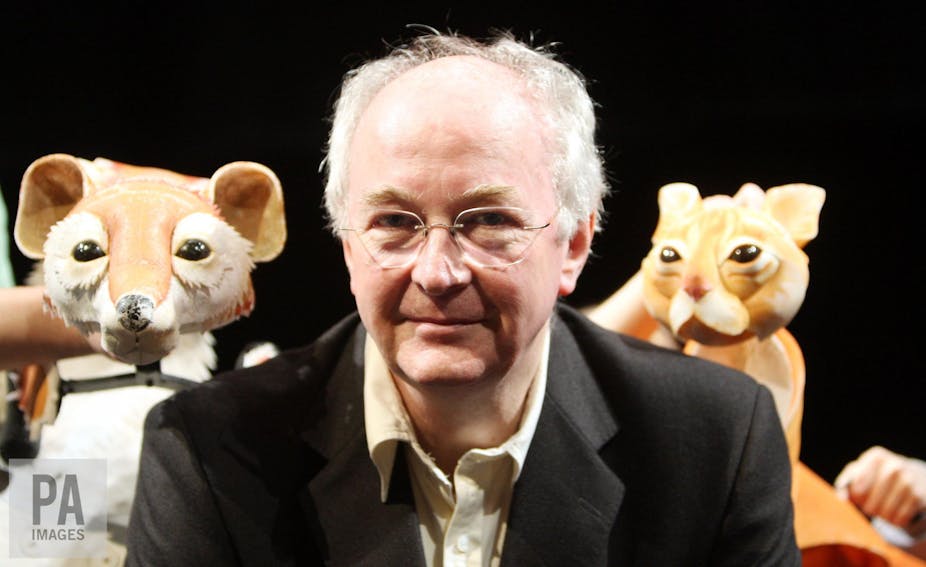The long anticipated follow up to Philip Pullman’s trilogy His Dark Materials has finally arrived. After a decade of waiting, midnight launches greeted the first instalment of what the author described not as a prequel or sequel, but an “equel”: La Belle Sauvage.
Pullman’s creation of parallel universes sold in its millions, and provided him with critical acclaim, fans across the world – and controversy. His Dark Materials is famous, if not notorious, for its treatment of organised religion. In it, the Catholic Church is an evil institution that maims and kills children to achieve its goals. Science is just as essential to the trilogy, but tends to attract less critical attention.
Yet the scientific content, which is advanced far beyond the level of comprehension of a child reader, has a fundamental impact on the narrative. “Dust”, the mysterious substance after which both trilogies are named, is based on a real scientific concept: dark matter.
According to contemporary physics, roughly 85% of the mass in the universe consists of dark matter, but the stuff itself has never been observed. This is why we know very little about it, even 20 years after His Dark Materials was first published.
Pullman uses this mysterious side of dark matter to create a fantasy narrative that is based on current scientific research. But there is one important difference between Dust and dark matter – Dust particles are conscious and attracted to human beings, although not to “innocent” children. In the books, the church sees this as a reason to superpose an absolute distinction between innocence and sin onto the transition from child to adult.
Pullman, however, shows that adulthood does not imply becoming sinful, but becoming knowledgeable. It is Dr Mary Malone, a theoretical physicist and former nun, who discovers the real connection between Dust and religion. Through her work at the “Dark Matter Research Unit”, she finds out how to communicate with the Dust particles, which identify themselves as “angels”. By growing up, people become connected to Dust.
Anti-religious?
His Dark Materials is not quite as anti-religious as some suggested, and it is certainly not the case that science is favoured over religion. Science and religion are strongly intertwined, without one being unconditionally good and the other evil. Both, as institutions, can be dangerous in the wrong hands.
Pullman presents an ambivalent view of science, countering the stereotypical idea that science is neutral and not political. Scientific institutions can harbour dangerous, unethical investigations. Whereas in most fiction evil scientists work by themselves in secret, in His Dark Materials they are organised.
Pullman shows how science, like religion, can suffer from institutionalisation, and how a non-democratic approach can stifle the very principles on which science was founded. He shows his readers the influence individuals can have on the world based on their moral choices. Sound morals are essential in both science and religion, and access to knowledge must be democratic and universal in both.
In order to investigate Dust/dark matter, researchers like Dr Malone have to struggle for funding. Pullman uses funding as a means to show the reader the politics that go on inside the university, as well as the ways in which university policies can be influenced by outside politics. Science in reality and in fiction is dependent on the power of external parties that possess the financial means to determine which kinds of scholarship are worth pursuing.
In His Dark Materials, before dedicating herself to physics, Dr Malone took religious vows. Both her scientific attitude and her previous role are essential to helping the main characters, Lyra and Will. Her actions emphasise the role of individual freedom and debate in both science and religion.
In the two worlds of the novels (Will’s/ours and Lyra’s) scientific development is largely determined by who funds it. In Lyra’s world, the church controls the University of Oxford. Similarly, a man presents himself as a potential funder for Malone’s research with additional money from the government’s defence department, but demands that the research be conducted entirely on his terms.
Pullman thus shows how essential human agency is to science. Whether to accept defence (or other morally dubious) funding is a dilemma faced by researchers at all levels today, especially in the sciences. In His Dark Materials, science, religion and politics rely on, and influence each other, in equal measure.
Both in religion and in science, Pullman argues for institutional reform. There is a struggle between knowledge and ignorance in both fields, and an attempt to keep people ignorant. Pullman proposes a democratic view of both religion and science.
His less dark democracy
Science must be open-minded and accessible, since both science and religion can be dangerous in despotic hands. By making not only the concept of scientific enquiry but also real scientific concepts part of his story, Pullman strengthens his argument on scientific practice. Pullman’s case for democracy in science, religion, and all other forms of knowledge is made more strongly through this connection to potential real-world applications.
By combining a scientific background with a story in which religion is central, Pullman shows that neither is the ultimate authority. Bringing in modern science, His Dark Materials opens up an up-to-date discussion of religion that can be continued in the 21st century.
Pullman shows his readers how their ideal approach to science and religion can be achieved, at an individual level. He is opposed to excessive institutionalisation. For Pullman, all forms of knowledge should be organised democratically, and open communication is an essential part of this process.
Including modern physics in his books makes it possible to address centuries-old questions about morality and knowledge – and show that these questions are still valid to this day.

